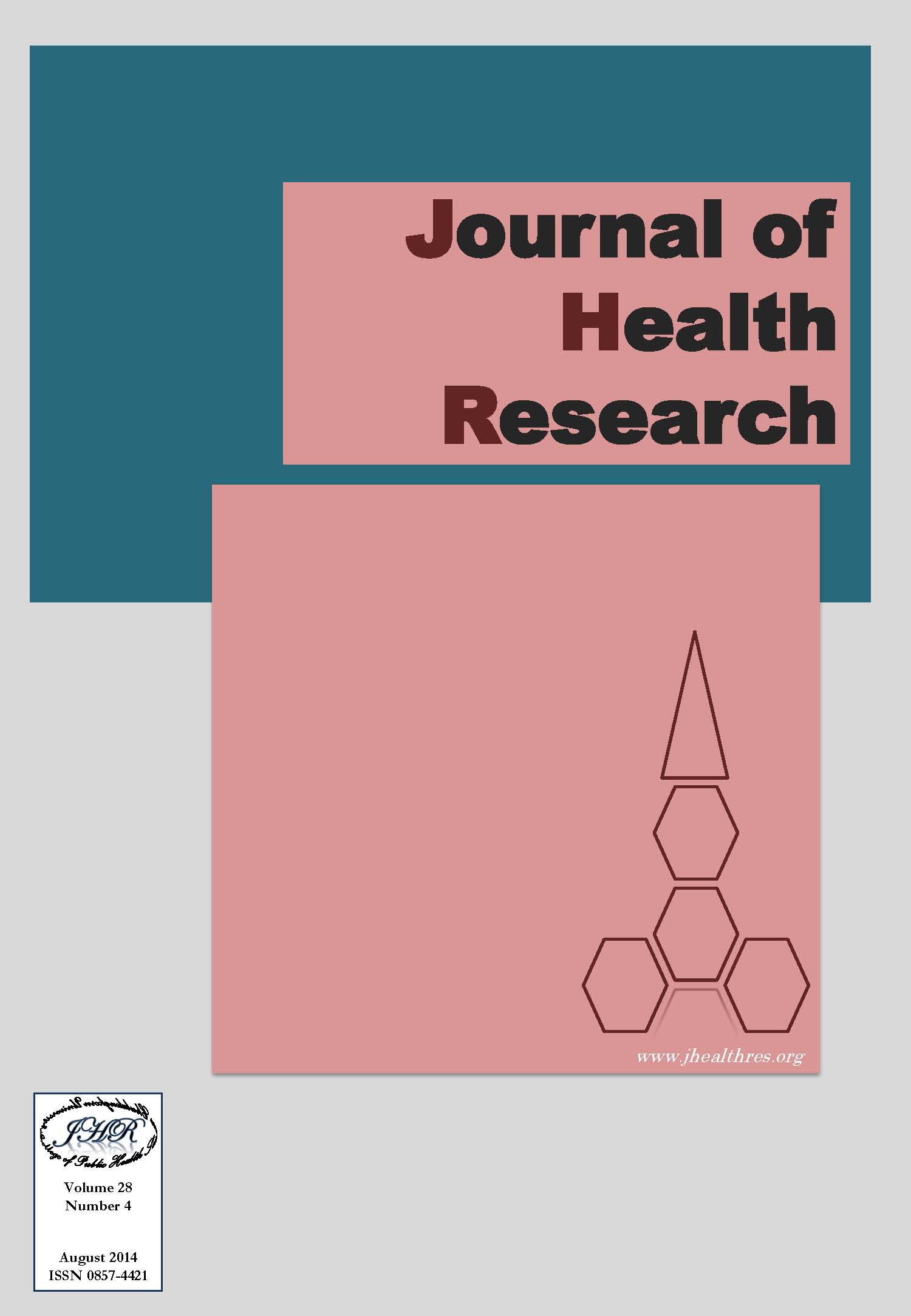Nutritional Status of Secondary High School Adolescent Girls Ages 14-19 Years, Manatutuo District, Timor-Leste
Keywords:
Nutritional status, Body Mass Index, Nutrition knowledge energy, Consumption, Adolescent girls, Timor-LesteAbstract
The objective of the study was to determine the host, agent, and environment factors associate with nutritional status of adolescent girls aged 14-19 years old in three secondary high schools of Manatuto district, Timor-Leste. This research was a cross-sectional study with simple random sampling was used for 244 participants, with purposive selected at two sub-district on February 2013. Data collection was done by self-administrated questionnaire. Anthropometric measurement was used for the calculation of BMI, and height for age (stunting). Data analyzed using SPSS version 17.0 and food consumption using nutrisurvey window program. The results revealed that 50.8% of adolescent girls in Manatuto district had BMI with the normal healthy weight range (18.6-25 kg/m2). Of 49.2% had low BMIs score ≤18.5 kg/m2. Majority 75.4% had height comparing into age a normal (-2Zscore-+2Zscore), 24.6% stunting (≤ -2Z score). Nearly half of respondents (43.3%) had low knowledge level. Only 39.3% had low energy consumption, 31.2% had moderate consumption, 24.2% of them had deficit and only 5.3% good consumption, 95.9% had calorie intake <2200 kcal per person per day and 61.8% had daily protein intake of less than 50 gram/day. This study examined statistically significant (p-value <0.05) association between, nutrition knowledge, energy consumption, mother level of education with nutritional of BMI. Also found the association between fish consumption and nutritional status of height for age statistically significant (p -value <0.05). The recommendation for further study is that create more nutrition promotion materials and provide advice to families and adolescents about the importance of eating a balanced diet to meet the nutrient requirements of early adolescents, middle adolescent and late adolescent with more consumption of animal sources and a variety of cereals, vegetable, legumes, and fruit. Consider the introduction of multi-micronutrient supplementation specific on iron folic acid to meet the nutrition requirements in reduction anemia deficiency. Policy implication of national nutrition strategy and reproductive health strategy, more in action plan to address the adolescent issues in particular of adolescent girls to be included as a target group in all maternal and child health program in across sectors.






